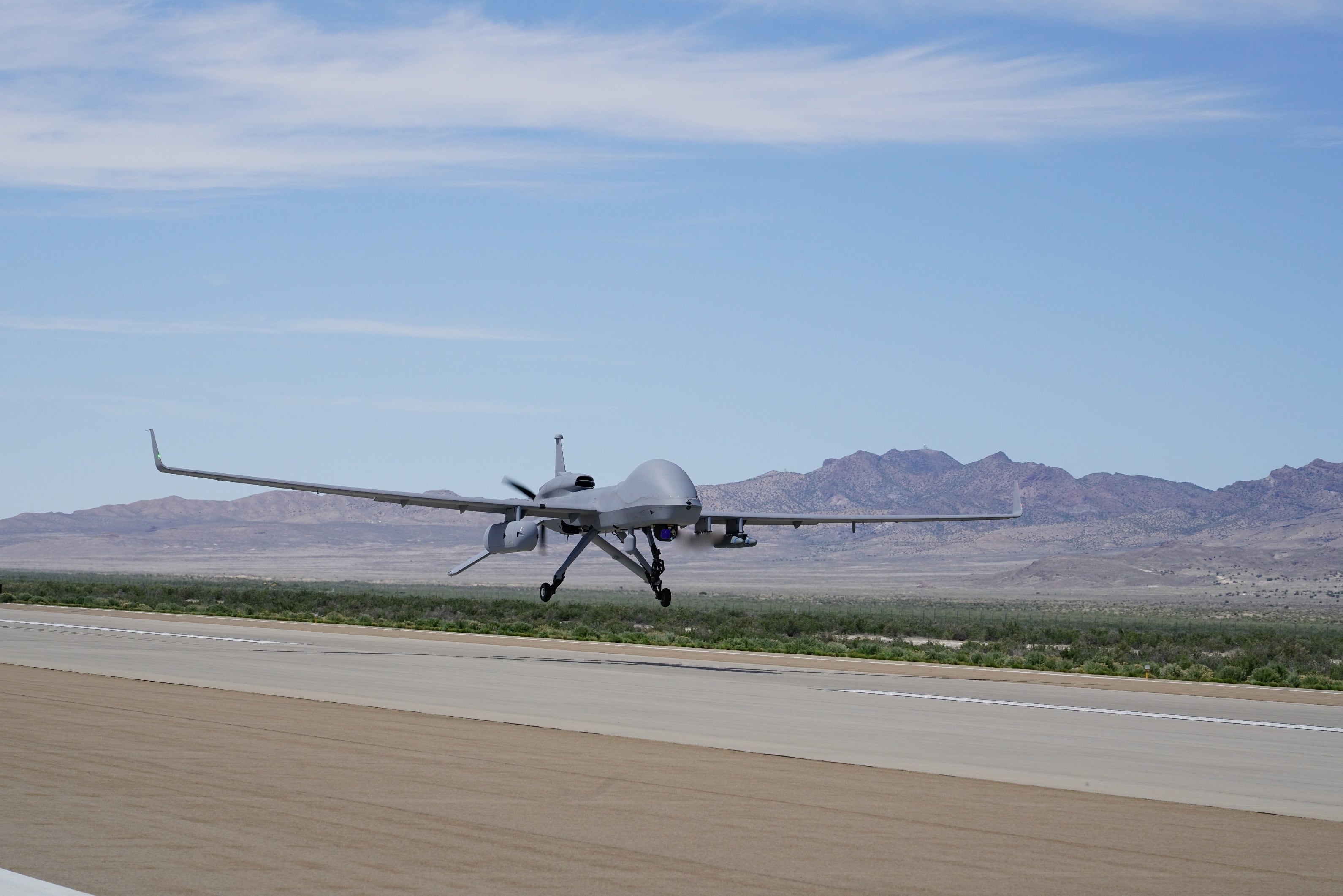ABERDEEN PROVING GROUND, Md. — A little more than a month after disclosing that gaps in the U.S. military’s electronic warfare toolkit are causing him to lose sleep, Army Undersecretary Gabe Camarillo said one of the service’s premier efforts to provide jamming and sensing capabilities shows promise.
The Army showcased its Multi-Function Electronic Warfare-Air Large pod this week in Aberdeen, Maryland. The service is building back its EW arsenal after decades focused on counterterrorism, confronting forces that were less technologically savvy. The targeting of communications and other networks seen daily in the war in Ukraine is adding to the sense of urgency, U.S. officials say.
EW is a fight over control of the electromagnetic spectrum, which militaries use for situational awareness, communications and weapons guidance. The contest is increasingly important as more and more-advanced technologies are deployed on the battlefield and troops try to minimize signatures to avoid detection.
“What concerned me, always, is that we’ve got to keep pace with the threat over time,” Camarillo told reporters Aug. 23, following a morning of briefings. “I’m really impressed with the MFEW program that the Army has, its different configurations and where it’s going.”
The self-contained pod, made by Lockheed Martin, was intended to be mounted to an MQ-1C Gray Eagle drone. Other platforms are now being explored. The Air Force has expressed interest in working it into an A-10 attack plane, and testing is anticipated with the High Accuracy Detection and Exploitation System, a jet tooled for intelligence, surveillance and reconnaissance.
As long as a power supply and an ethernet port are available, MFEW-AL is an option, officials said Tuesday.
RELATED

“We want to be platform agnostic. For other platforms, we can provide a smaller form factor if there’s a requirement,” said William Utroska, a leader at the Program Executive Office for Intelligence, Electronic Warfare and Sensors. “We’re working with the Future Vertical Lift Cross-Functional Team, because they have EW requirements and they know we’ve already done a lot of the work upfront.”
Camarillo said he saw one of the prototypes in the field, courtesy of PEO IEW&S, and liked its open-ended approach.
“I think that’s one area where the Army is heading in the right direction,” Camarillo said. “It’s giving us the ability to not just look at sensor payloads and EW payloads, but how they fit in certain components, how we can plug and play over time to give us an opportunity to do that tech insertion and to stay ahead of what the threat might be, and also have the latest generation capabilities.”
The Army is pushing EW in other areas as well.
The service in July inked a $58.8 million contract with Lockheed to furnish prototypes for the Terrestrial Layer System-Brigade Combat Team program. In August, it handed Lockheed and General Dynamics Mission Systems separate deals for Terrestrial Layer System-Echelons Above Brigade concepts and demonstrations.
Both systems, once realized, will give soldiers a bloc of EW, cyber and signals intelligence capabilities.
Colin Demarest was a reporter at C4ISRNET, where he covered military networks, cyber and IT. Colin had previously covered the Department of Energy and its National Nuclear Security Administration — namely Cold War cleanup and nuclear weapons development — for a daily newspaper in South Carolina. Colin is also an award-winning photographer.









